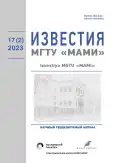History of the scientific researches of the vehicles with hydrogen power units
- Authors: Anisimov V.R.1,2, Klimov A.V.1,2
-
Affiliations:
- Moscow Polytechnic University
- KAMAZ Innovation Center
- Issue: Vol 17, No 2 (2023)
- Pages: 127-136
- Section: Combined power plants
- URL: https://journals.rcsi.science/2074-0530/article/view/253969
- DOI: https://doi.org/10.17816/2074-0530-139224
- ID: 253969
Cite item
Full Text
Abstract
BACKGROUND: Fuel cells are one of the promising directions in the development of electrified transport as it is capable of providing with mileage comparable to conventional vehicles powered by internal combustion engines, with no harmful emissions into the environment during the vehicle motion. The long-lasting process of development of fuel cells was associated with the inability to realize the potential of fuel cells and the availability of more accessible and reliable energy sources at that time. The present programs and measures to support electric vehicles and fuel cells set targets for reducing emissions of harmful gases and increasing the share of electric vehicles on the roads.
AIMS: The study of the history of the development of fuel cells and their relevance to the use in vehicles.
METHODS: The calculations to determine the specific parameters were performed with solving the differential equation of the force balance of vehicle motion using the numerical Euler method.
RESULTS: The results of the scientific research are the determination of specific parameters of power units and the analysis of the history of the development of fuel cells. By comparing the specific parameters, it was revealed that the most effective are combined power units on fuel cells. When using these power units, a 2.5-fold decrease in mass was recorded compared to other types of power units.
CONCLUSIONS: The use of fuel cells helps to reduce the weight of the power units and to improve the environmental safety of the vehicle. Fuel cells have undergone several long stages of development and reached their peak of development after the beginning of active space exploration. Currently, the development of hydrogen technologies is actively continuing, programs for the development of electrified transport have been issued in many countries, including the Russian Federation.
The authors note the relevance of scientific research in this area and assume that vehicles powered by electrochemical generators will receive their further development in the coming years.
Full Text
##article.viewOnOriginalSite##About the authors
Viktor R. Anisimov
Moscow Polytechnic University; KAMAZ Innovation Center
Author for correspondence.
Email: rabota.viktor.1999@mail.ru
ORCID iD: 0000-0003-1268-6604
SPIN-code: 5036-8965
Postgraduate of the Advanced Engineering School of Electric Transport (AES)
Russian Federation, 38 Bolshaya Semenovskaya street, 107023 Moscow; MoscowAlexandr V. Klimov
Moscow Polytechnic University; KAMAZ Innovation Center
Email: Aleksandr.Klimov@kamaz.ru
ORCID iD: 0000-0002-5351-3622
SPIN-code: 7637-3104
Cand. Sci. (Tech.), Associate Professor of the Advanced Engineering School of Electric Transport (AES), Head of the Electric Vehicles Department
Russian Federation, 38 Bolshaya Semenovskaya street, 107023 Moscow; MoscowReferences
- Motor Vehicle. Wikipedia. [internet] Accessed: 26.11.2022. Available from: https://en.wikipedia.org/wiki/Motor_vehicle
- Orange County Bus (OC BUS) Cycle. Emission Test Cycles. Accessed: 09.03.2023. Available from: https://dieselnet.com/ standards/cycles/ocbus.php
- Hoogendoorn J. Fuel Cell and Battery Hybrid System Optimization Increased Range and Endurance [dissertation] Delft; 2018.
- Radchenko RV, Mokrushin AS, Tyulpa VV. Hydrogen in energetics. Yekaterinburg: Izd-vo Ural. Un-ta; 2014. (In Russ.)
- Fuel Cell. Wikipedia [internet] Accessed: 26.11.2022. Available from: https://en.wikipedia.org/wiki/Fuel_cell
- Larminie J, Dicks A. Fuel Cell Systems explained. 2nd ed.Chichester: Wiley; 2003. doi: 10.1002/9781118878330
- Melis A, Happe T. Hydrogen Production. Green Algae as a Source of Energy. Plant Physiology. 2001;127(3):740–8. doi: 10.1104/pp.010498
- Stambouli AB, Traversa E. Solid oxide fuel cells (SOFCs): a review of an environmentally clean and efficient source of energy. Renewable and Sustainable Energy Reviews. 2002;6(5):433–55. doi: 10.1016/s1364-0321(02)00014-x
- Appleby AJ. From Sir William Grove to today: fuel cells and the future. Journal of Power Sources. 1990;29(1–2):3–11. doi: 10.1016/0378-7753(90)80002-u
- Stone C. From curiosity to “power to change the world.” Solid State Ionics. 2002;152–153:1–13. doi: 10.1016/s0167-2738(02)00315-6
- Burke K. Fuel Cells for Space Science Applications. In: 1st International Energy Conversion Engineering Conference (IECEC). 2003. doi: 10.2514/6.2003-5938
- Mishin S. ANTEL. Zhurnal Za rulem. 2012. Accessed: 28.12.2022. (In Russ.) Available from: https://wiki.zr.ru/АНТЭЛ.
- Allis-Chamers Fuel Cell Tractor. The Weekend Historian. 2015. Accessed: 28.12.2022. Available at: https://theweekendhistorian. com/2015/02/28/allis-chalmers-fuel-cell-tractor
- Shaikhatdinov FA, Filimonova AA, Hokhonov AA, et al. Creation of an electric bus with hydrogen fuel cells in the Russian Federation. Nadezhnost’ i bezopasnost’ energetiki. 2022;15(3):190–8. (In Russ). doi: 10.24223/1999-5555-2022-15-3-190-198.
Supplementary files








